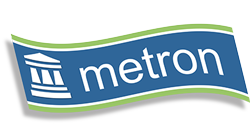I left you with the question on Monday of 'Where does this leave you?' and I
guess I have raised as many questions as I have answered.
This is no surprise as whether or not SaaS is
the best model for your Capacity Management depends on your organization and
your needs. The questions are really the
same as any outsourcing decision: who will do what and will it be worth the
money?.
There
are of course some questions that might be a simple ‘yes’ or ‘no’ answer for
your organization. If your security
policies are such that any capacity data will not be allowed to be transferred
out of the business, SaaS is not for you.
Understanding and getting answers to these questions first will save a
lot of wasted time and effort considering options.
My concern would always be over the intangible area of knowledge. While I can see a third party being able to meet a regular, standard, repeated reporting requirement, much of the value of Capacity Management is beyond this. Whenever I visit our clients I am always impressed at the breadth of knowledge the Capacity Management team has across both IT and the business. It is taking this knowledge and combining it with the raw information produced from technical capacity data that is the source of true Capacity Management value to me. For this reason alone I can see the value in passing the logistics of Capacity Management to a SaaS provider. Let them have the delights of keeping software up to date, ensuring there is adequate hardware resource at any time and so on. I would then usually prefer to have the intellectual capital, the use and application of that data allied to knowledge of my own business, kept in-house. Replacing it will take time and money.
That
is just one man’s opinion however. Your
organization might benefit from an expert Capacity Management business managing
their capacity issues from cradle to grave, raw data to information to support
your business decisions. In this
instance I would always recommend a specialist Capacity Management company with
experience to bring. Their Capacity
Management knowledge and experience will be a lot harder to find than a
business that can simply provide and maintain infrastructure and software for
you.
If
there is one area of conclusion therefore, it would be around the issue of
expertise. Whether your Capacity
Management is on premise or SaaS, someone needs specialist Capacity Management
knowledge and the ability to apply that knowledge to issues unique to your
organization. Whatever route you take,
make sure that experience is on your payroll, or that of your provider.
If you don’t, all you might get is data.
Take a look at our SaaS Capacity Management http://www.metron-athene.com/products/athene-capacity-management-software-as-a-service/index.html
Andrew Smith
Chief Executive Officer




